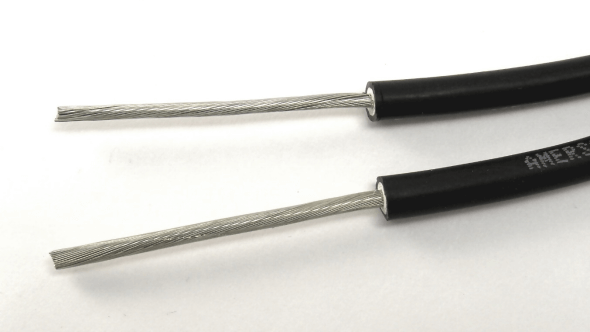Solar cables and solar wires are essential parts of the solar power system. They are used to transport the electricity that is generated by the solar power system to the places where they are needed. The role of transporting electricity from the source to other electrical components is not an easy one. This means that the quality and features of cables and wires used are a crucial aspect. Various solar cable and solar wire specifications have to be considered for the effectiveness of the solar power system. While electric cables and wires have similar functions, there are significant differences between the two.
The difference between solar cables and wires
Solar wires

Solar wires are single conductors of electricity. They have a smaller diameter than solar cables. Solar wires are usually made of copper or aluminum because both of these materials are good conductors of electricity, they are malleable and high in elasticity. There are two main categories of solar wires:
1. Solid (single) solar wire
This category of solar wires is a single conductor of electricity. This means that it can either be bare or insulated using a sheath for protection. This type of solar wire is used in static applications, the likes of household applications. Such applications can also include electrical wiring (the kind that is plastered on the inside). As compared to other types of wires, these wires are less costly with a more compressed diameter for a similar carrying capability as stranded wires.
2. Stranded wires
This type of wires features several thin strands of wires that are twisted together to come up with a single core of wires. This type of wires is suitable for use in areas where frequent movement and vibrations are constant. This type of wires is also more straightforward to a route with a larger diameter. They are also more costly.
Solar Cables

A solar cable features two or more insulated soar wires that are brought together in a single jacket. It may contain varying numbers of conductors, as well as varying diameter ranges on the number of conductors. There are different categories of cables which depend on the wires and the gauge. The different types of solar cables are:
1. DC cables
Main DC cables- these are special extension cables that are used to connect positive and negative cables from the strings to the generators.
Module DC cables- these are packed with suitable connectors with which they are integrated into the solar power system. They are mostly used outdoors and can sometimes be connected directly to the solar power inverter.
2. AC connection cables
These cables are used to link the solar panel inverter to the electricity grid.
Conclusion
While there are several differences between solar cables and solar wires, there are also several similarities between the two. A majority of the similarities between the two elements lie in the area of their functionality. Another similarity is in and factors to consider when determining the sizing of the cables and wires in the solar power system.









